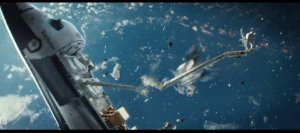 Blockchain and the cloud go together like organic macaroni and cheese. What’s the connection? Choosy shoppers would like to know that their organic food is tracked from farm to shelf, to make sure they’re getting what’s promised on the label. Blockchain provides an immutable ledger perfect for tracking cheese, for example, as it goes from dairy to cheesemaker to distributor to grocer.
Blockchain and the cloud go together like organic macaroni and cheese. What’s the connection? Choosy shoppers would like to know that their organic food is tracked from farm to shelf, to make sure they’re getting what’s promised on the label. Blockchain provides an immutable ledger perfect for tracking cheese, for example, as it goes from dairy to cheesemaker to distributor to grocer.
Oracle’s new Blockchain Cloud Service provides a platform for each participant in a supply chain to register transactions. Within that blockchain, each participant—and regulators, if appropriate—can review those transactions to ensure that promises are being kept, and that data has not been tampered with. Use cases range from supply chains and financial transactions to data sharing inside a company.
Launched this month, Oracle Blockchain Cloud Service has the features that an enterprise needs to move from experimenting with blockchain to creating production applications. It addresses some of the biggest challenges facing developers and administrators, such as mastering the peer-to-peer protocols used to link blockchain servers, ensuring resiliency and high availability, and ensuring that security is solid. For example, developers previously had to code one-off integrations using complex APIs; Oracle’s Blockchain Cloud Service provides integration accelerators with sample templates and design patterns for many Oracle and third-party applications in the cloud and running on-premises in the data center.
Oracle Blockchain Cloud Service provides the kind of resilience, recoverability, security, and global reach that enterprises require before they’d trust their supply chain and customer experience to blockchain. With blockchain implemented as a managed cloud service, organizations also get a system that’s ready to be integrated with other enterprise applications, and where Oracle handles the back end to ensure availability and security.
Read more about this in my story for Forbes, “Oracle Helps You Put Blockchain Into Real-World Use With New Cloud Service.”

 This is either a mistake or an clever attempt to evade anti-spam filters. There is no message body. I am inclined to believe it’s the latter, guessing that filters will look at the body of the message, not the subject line. Either way, the U.S. Homeland Security department doesn’t use email addresses in Italy for official business, or ask fund recipients to confirm their nearest airport.
This is either a mistake or an clever attempt to evade anti-spam filters. There is no message body. I am inclined to believe it’s the latter, guessing that filters will look at the body of the message, not the subject line. Either way, the U.S. Homeland Security department doesn’t use email addresses in Italy for official business, or ask fund recipients to confirm their nearest airport. If you saw the 2013 Sandra Bullock-George Clooney science-fiction movie Gravity, then you know about the silent but deadly damage that even a small object can do if it hits something like the Hubble telescope, a satellite, or even the International Space Station as it hurtles through space. If you didn’t see Gravity, a non-spoiler, one-word summary would be “disaster.” Given the thousands of satellites and pieces of man-made debris circling our planet, plus new, emerging threats from potentially hostile satellites, you don’t need to be a rocket scientist to know that it’s important to keep track of what’s around you up there.
If you saw the 2013 Sandra Bullock-George Clooney science-fiction movie Gravity, then you know about the silent but deadly damage that even a small object can do if it hits something like the Hubble telescope, a satellite, or even the International Space Station as it hurtles through space. If you didn’t see Gravity, a non-spoiler, one-word summary would be “disaster.” Given the thousands of satellites and pieces of man-made debris circling our planet, plus new, emerging threats from potentially hostile satellites, you don’t need to be a rocket scientist to know that it’s important to keep track of what’s around you up there.